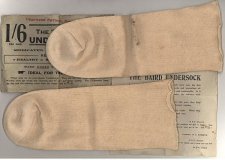| Whale Oil Uses |
|
Home |
Trench foot Trench Foot was a serious disorder during World War 1, especially during the winter of 1914-1915, when over 20,000 Allied men were affected. Whale oil played a vital role in minimizing the condition but even so some 74,000 Allied troops had been afflicted by the end of the war. In Flanders and France trenches were dug in land that was often at or near to sea level and where the water table was just beneath the soil surface. After a couple of feet of digging the soldiers inevitably hit water and the trenches became flooded. To make matters worse, the heavy artillery barrages destroyed the agricultural land-drains and the whole landscape became a sea of mud in which men could literally drown. Conditions were arguably at their worst at the battle of Passchendale in the Ypres salient. The photograph, taken on November 14th 1917, shows Private Reginald Le Brun and other members of the 16th Canadian Machine Gun Company in the reserve line at Passchendaele. After hours and days of standing in soaking wet socks and boots, Trench Foot would begin to set in. The men's feet would swell and go numb and then the skin would start to turn red or blue. Untreated feet rapidly became gangrenous and would need to be amputated. The feet in the photograph belong to an unfortunate, but unknown, Canadian soldier struck down in 1917. To minimize the chances of contacting Trench Foot, the men were ordered to change into dry socks as often as possible. Around 1916, John Logie Baird started to sell socks prepared with borax to help alleviate the problems of wet feet. These were widely used by soldiers at the front. The soldiers were also instructed to grease each others' feet with whale oil at least once a day. It is estimated that a battalion (1007 men and 30 officers) at the front would use up to ten gallons of whale oil every day. Question: How many bowhead whales would be needed to supply a battalion for a month? You might find the following link helpful. Links:Oil history - whale oil |


